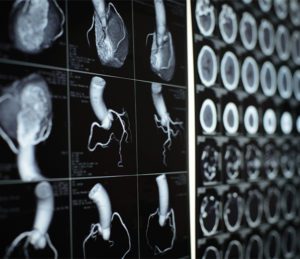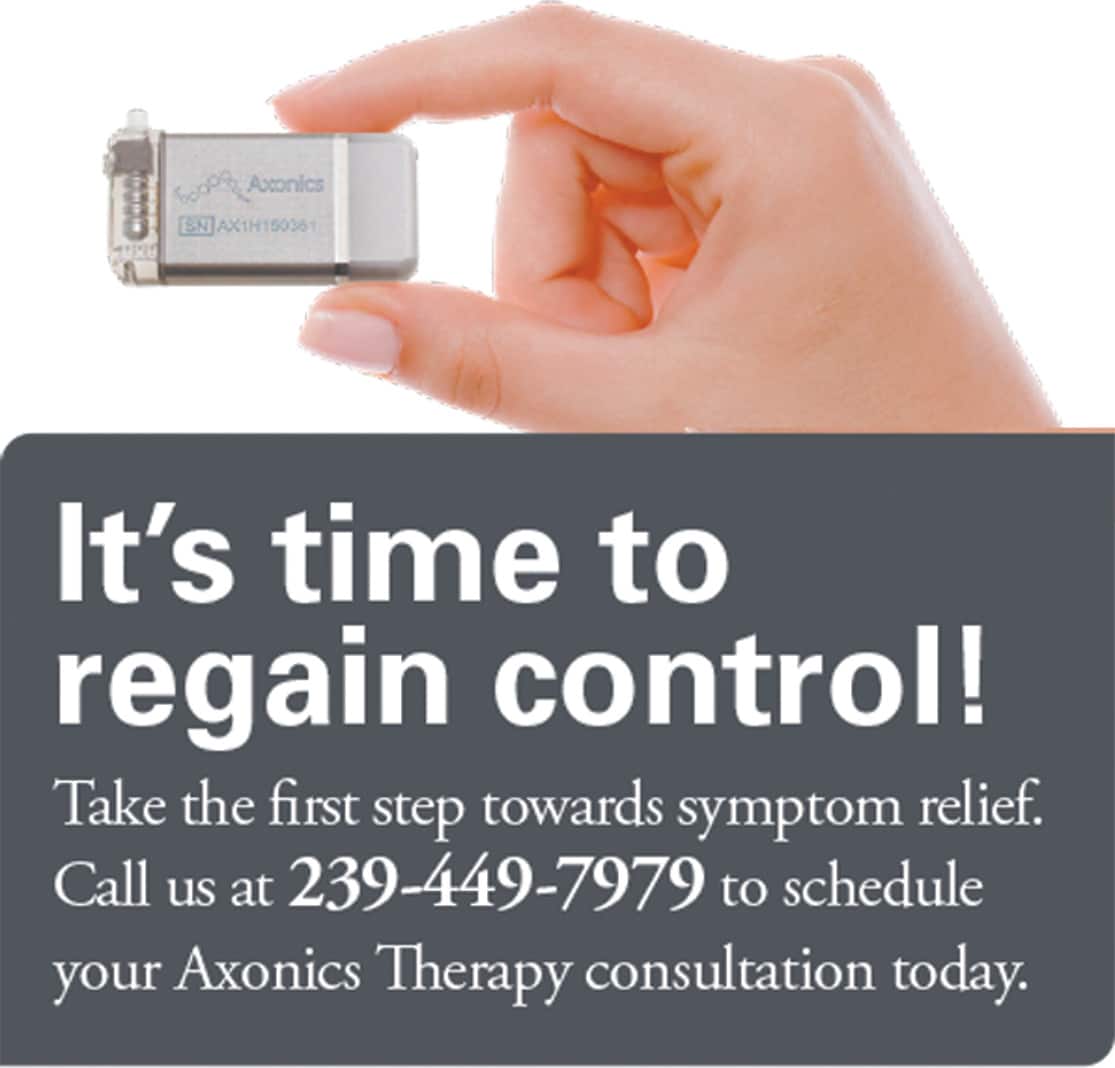 Bayfront Health Port Charlotte and Punta Gorda are exceptionally focused on recruiting and retaining a dedicated group of specialists and subspecialists to further develop services for the community. Recently, they recruited Dr. Eileen de Grandis for her highly-sought after vascular surgery algorithms and expertise.
Bayfront Health Port Charlotte and Punta Gorda are exceptionally focused on recruiting and retaining a dedicated group of specialists and subspecialists to further develop services for the community. Recently, they recruited Dr. Eileen de Grandis for her highly-sought after vascular surgery algorithms and expertise.
Dr. Eileen de Grandis has been treating patients in Southwest Florida for the past two years. She manages a variety of conditions and diseases, including peripheral arterial, aortic (including open bypass and arterial reconstruction), access, and venous procedures. She is specially trained in minimally invasive surgery techniques for limb salvage and vein disease. Dr. Eileen enjoys participating in community education and patient care.
Dr. Eileen earned her Doctor of Medicine from Temple University School of Medicine in Philadelphia, PA. She completed a general surgery residency at the renowned Mayo Clinic in Rochester, MN, and a fellowship in vascular surgery at the University of Minnesota in Minneapolis, MN.
We caught up with Dr. de Grandis to find out more about her specialty.
Q: Tell us about why you became a vascular surgeon.
A: When I was in medical school at Temple University, the hospital I trained at was located in North Philadelphia. This area was known for its crime rate so I saw all sorts of really bad vascular issues, from gunshot wounds, stabbings, and blunt force trauma (like a baseball bat to the head), to motor vehicle accidents. But, I also saw a lot of routine vascular disease, from peripheral artery disease and gangrene, to diabetic foot ulcers. The vascular surgeons were the guys who could really support other surgeons. If a trauma surgeon saw a really severely damaged blood vessel from a gunshot wound, like a torn artery, the vascular surgeon was called in to fix it. If the OBGYN accidentally cut a pelvic vein during a difficult C-section, the vascular surgeon repaired it. If a patient came in with no blood flow in the leg due to a really severely dislocated knee, the vascular doctors came in to evaluate and fix it with the orthopedic docs. But they could do preventative things as well. At the Mayo Clinic and University of Minnesota, I saw solid, time-tested procedures as well as wonderful new technologies. A carotid endarterectomy, where the plaque in a major blood vessel to the brain is cleaned out and repaired, is a surgery meant to prevent stroke. Aortic and pelvic aneurysms could be fixed with metal tubes (stents) through tiny half-inch punctures in the groins, long before they caused problems. In the surgical world, not many procedures are preventative; many are a reaction to a problem. I liked that vascular could do both. A vascular surgeon can work on any part of the body where there were blood vessels. I felt that I could help the most people in the community by being a vascular surgeon, to have this level of expertise and versatility.
Q: You mentioned that you treat each patient with a “whole person vascular health protocol.” What does that entail?
A: If a patient comes in with a leg problem, for example, a diabetic foot ulcer, I do a complete exam, head to toe, to make sure he/she does not have any other vascular issues and other medical problems that can affect the entire vascular system. I look for problems like heart issues, pulmonary (lung), kidney, and diabetic issues; all things that can affect blood supply, or are a reflection of vascular health. The heart is very closely linked to the blood vessel system, because the heart pumps the blood volume to the rest of the body, and we know that disease in one blood vessel is likely indicative of disease in all blood vessels. Plaque disease in arteries is not specific to one area; it is non-discriminatory. It is pervasive and can cause a whole host of problems in the body, not just in the arms and the legs. Even if a patient comes in with problems with their veins, I still look at their arteries to make sure I didn’t miss anything. If a patient comes in for their aorta, I still look at their carotids and legs. Similarly, they come in for their legs; I look at everything else too. It’s a whole body approach.
Q: What diagnostic procedures do you recommend for your patients?
A: When my patients come in, I tell them to expect a very thorough vascular exam, which is a full physical exam, plus checking pulses in the legs, arms, pelvis, and neck. By simply doing a comprehensive physical exam, I can often catch problems or diseases before any imaging is done. From there, many patients start with an ultrasound and an ABI (ankle-brachial index), which is a number based on blood pressure measurement of the arms and legs. If these are abnormal, sometimes the patients need CT scans, MRIs, or angiograms, which is a way to take dye-based x-ray pictures that also can be done with treatments such as stents and balloons at the same time. Each patient is different, and their workup is tailored to what they need.
Q: Are there any advanced procedures that you’d like to discuss?
A: Vascular is an ever-changing field. There are a lot of new advancements. I like to focus on procedures that minimize pain and have a lasting result. For example, many of my venous procedures can be done with chemicals that are not painful to inject or micro-incisions, two-millimeter incisions to pull problem veins out, or radiofrequency ablation through a tiny puncture in the leg. These are great procedures with very short healing times and great cosmetic and therapeutic effects.
For problems with blood flow through arteries, a lot can be done with a small puncture in the groin or in the arm arteries as well. With a tube about the size of a coffee stirrer, I can balloon, stent, and even scrape out plaque. Each procedure is tailored to what the patient needs. Large aneurysms in the chest and belly can be treated in the same manner through punctures and small incisions. In this day and age, a lot can be done with little pain, short hospital stays – just overnight, or even as an outpatient with no hospital stay at all.
Q: What are some common symptoms that patients tend to overlook regarding their vascular health that may be significant indicators of cardiovascular disorders?
A: The main overlooked indicators are achiness or pain with walking, and pain that gets worse when walking progresses. Unexplained leg swelling that gets worse at the end of the day or with unexplained redness and pain is another sign that individuals tend to disregard. If patients have belly pain or consistent pain after eating, that can be a sign of vascular disorders as well.
Stroke prevention cannot be stressed enough. Unfortunately, many people often ignore the signs of stroke. Temporary loss of speech, balance, forgetfulness, one-sided weakness, facial droop, are all signs of early stroke. The three causes of stroke stem from either the heart, blood vessels to the brain, or in the brain blood vessels. I can treat the blood vessels to the brain (carotids). The carotid arteries can be fixed surgically by cleaning them out, or stenting. Both are very safe procedures, and either can be done in the majority of patients, depending on what is appropriate to the patient.
There are also foot ulcers and open sores that won’t heal. Patients with these symptoms typically have diabetes or have a history of smoking. Likewise, those individuals with a family history of aneurysms, unexplained deaths, and strokes are at high risk for vascular disorders, and they may be ignoring their symptoms as well.
The risk factors and symptoms that Dr. Eileen mentioned should never be ignored. The sooner you are diagnosed and treated, the better your outcome will be. If you need immediate attention, please call 911.
If you or someone you know has vascular disease or other symptoms that may require an examination, diagnostic testing, or procedure, please contact Dr. Eileen’s office today to schedule your appointment.
Bayfront Health Medical Group
Cardiothoracic and Vascular Surgery
2380 Harbor Blvd, Port Charlotte, FL 33952
(941) 206-0325
Bayfront Health Accepts most Major Insurance Plans








